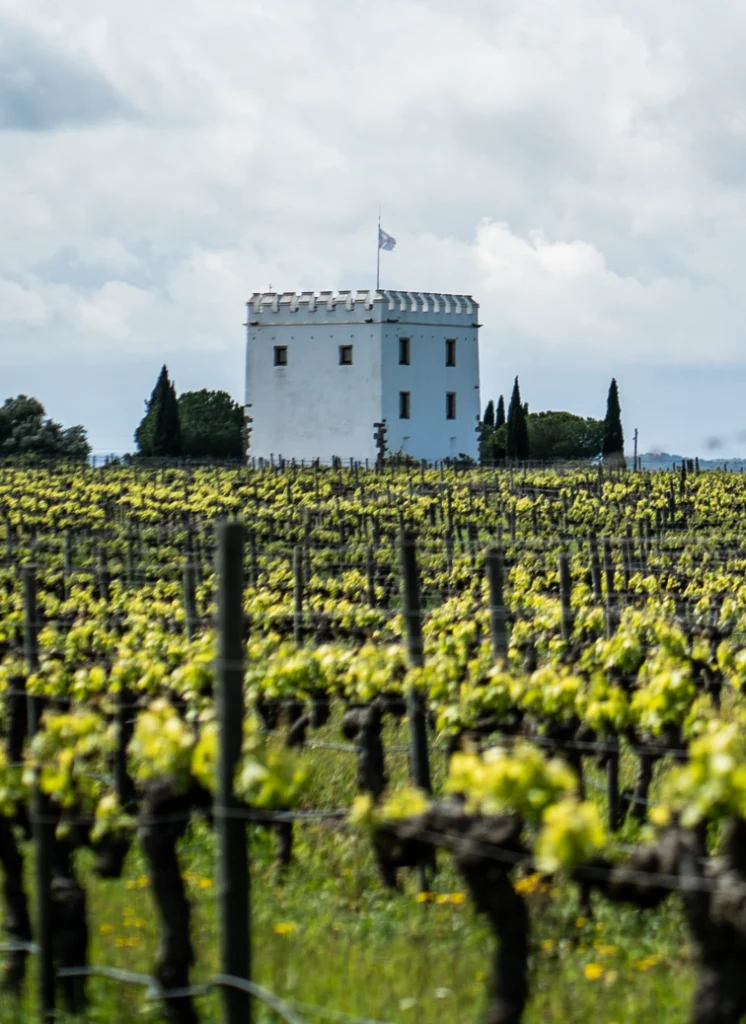Esporão
Estate in Alentejo
Reguengos de Monsaraz
Alentejo, Portugal
The range of wines produced at Esporão captures the sunny climate and diverse soils of Alentejo while also maintaining the estate’s celebrated house style, which offers freshness and silkiness through the lens of heirloom grape varieties. Everything about the estate reflects the company’s broader principles: here, passion for history, agriculture, art, archeology, and innovation unite.
Location & History
Esporao calls the heart of Alentejo (southeastern Portugal) home. While the estate’s boundaries were first established in 1267, its modern history began in 1973, when the property was acquired by José Roquette, founder of Esporão. Today, the majority of the estate’s vineyards are in central Alentejo in the subzone Reguengos de Monsaraz. Ever careful to stay balanced in their warm climate, the team does also work with a vineyard in the cooler, northern Portalegre subzone, located on the border of a large national forest.
Esporão is not only a storied company loved throughout Portugal and beyond, but also a singular place. This estate functions as a time capsule and living museum for Alentejo culture and is home to a cork oak forest (montado), olive groves, archaeological sites, biological preserves, and a Michelin starred restaurant with its own organic kitchen gardens—a tapestry of practiced wisdom that embodies the thoughtful innovation that allows a legacy company to continue to grow sustainably.
Winemaking Overview
Winemaking at Esporão demonstrates attentiveness not only to regional traditions but also to the current challenges of a changing climate. To be more strategic during harvest, which starts under late summer’s intense sun, the team at Esporão developed a second reception area and winery dedicated to white wine only—the first company in Portugal to separate white and red production. With nearly forty varieties used in regular production, this careful attention to making the best wines that the region can offer is complex, but ensures the wines are consistent year after year.
Esporão is proud home to many firsts, but also many nexts: the estate serves as a nursery for the revitalization and preservation of hundreds of indigenous Portuguese and Alentejo varieties, such as Amor-não-me-deixes (“Lover, don’t leave me) and Diagalves, and was the first in Portugal to use large format concrete and talhas (local clay amphorae) for regular production. Notable past winemakers David Baverstock and Sandra Alves helped ensure the foundations and methods that led to the Esporão house style. Today, José Luis Moreira da Silva proudly leads the production team.
Agriculture & Sustainability
Few wineries have teams dedicated to their own sustainability practices. Far fewer invest in research and practices meant to influence and inspire others in the region, country, and continent beyond their own vineyard gates. The entire winery (including the hospitality center and office buildings) is fueled by its own biomass—pomace and leaves left over from olive oil production—and much of the winery facilities are either underground or constructed with local clay and hay (adobe) that allows them to remain naturally cool. Esporão were leaders in the use of gray water for irrigation, which is essential in a draught-prone area like Alentejo. Ever conscious of resource preservation, the agriculture team has also promoted the use of special fire-resistant shrubs around the property.
Esporão is home to nearly a fifth of all organic vineyards in Portugal; converting to organic in the early 21st century was a process they approached as methodically as they do all endeavors, and they were rewarded by a dramatic increase in wine quality. The vineyards are being carefully replanted along an east-west angle in concordance with hydrology lines, allowing for more shade while preserving water and preventing erosion. Synthetic products are never used in the vineyards, only natural treatments such as kaolin clay: an organic protectant against the intense sun.
Wines
Wines from Esporão reflect the diversity of Alentejo and the versatility of the different vineyard sites to produce heritage and international varieties.
Reserva white and red are the flagship wines, first produced in 1985, representing the spirit of the estate’s origin: a desire to capture the ideal Alentejo wine profile. These field blends reflect a harmonious integration of diverse soils, organically grown local varieties, moderate oak, and expert cellar technique. Artwork has always accompanied the Reservas, and every year Esporão invites a different artist to design the label.
Colheita wines are produced entirely without oak (they age in tulip-shaped concrete vessels) and generally come from sites with more granite in the soil.
Private Selection wines are produced from the estate’s oldest vineyards and show the longest aging potential Small-production wines (Torre, Monocastas/Single Variety, and Talha) are produced in extremely limited quantities in select vintages after extensive review by the entire team and the Roquette family.
Visit
Tastings, Michelin star lunches in the dining room, and casual meals in the wine bar can be booked directly here.

